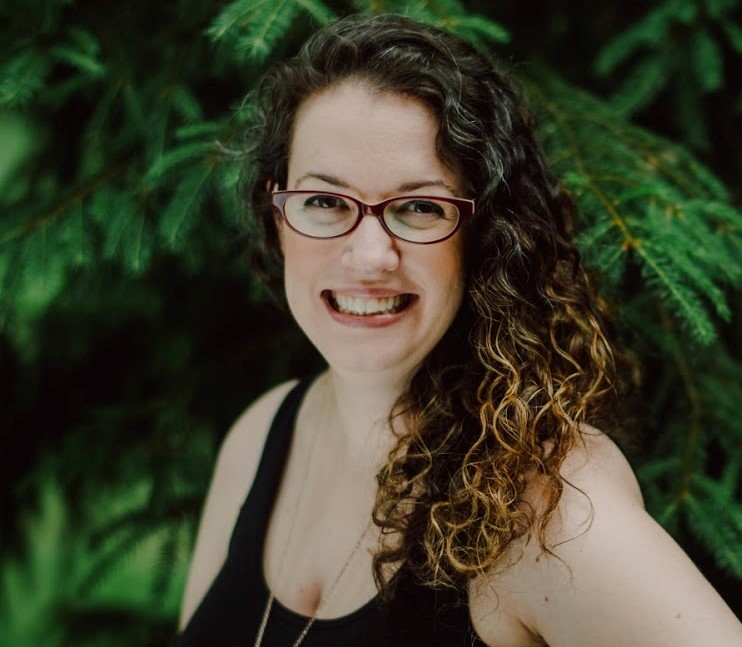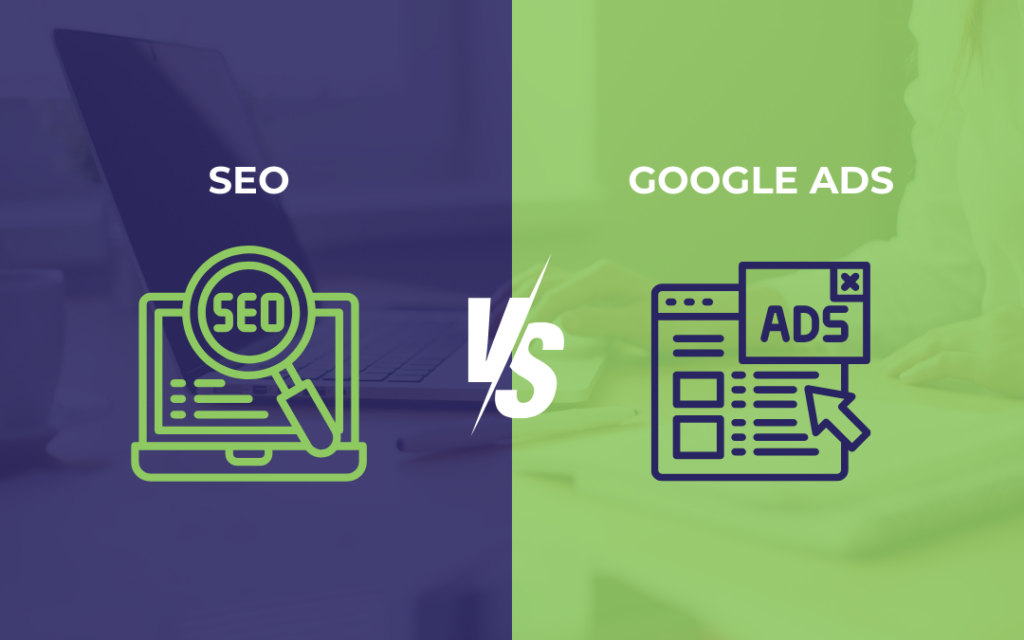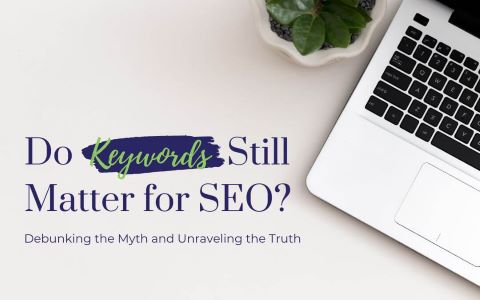There’s a plethora of advice out there for growing your business.
Everywhere you look, experts swear by different strategies about the “best” way to get found online.
Some say search engine optimization (SEO) is an absolute must-have. Others claim paid ads give you the biggest bang for your buck. And, of course, many insist you need a combo of both.
As someone who’s been in the digital marketing trenches for over a decade, I’ve seen SEO and paid ads work wonders. I’ve also seen them fail miserably when not set up correctly!
So, to help you determine which is better for your business—SEO or ads—let’s walk through the pros, cons, and best uses of both strategies.
After that, you’ll be able to determine the fastest, most budget-friendly way to get your business found online!
SEO or Google Ads: Which is Better?
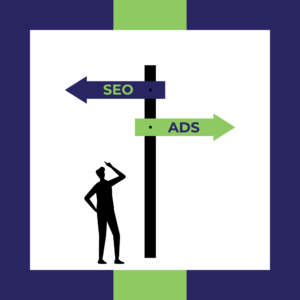
SEO and Google ads are not necessarily better than the other.
SEO and organic search counts for 53.3% of all website traffic. Meanwhile, 75% of users say paid search ads make it easier to find information.
But while SEO and Google ads both drive website traffic and sales, they work very differently!
The strategy you choose will depend on factors like price, speed of results, and the amount of work you’re willing to do.
Price: Google Ads are Faster, SEO is More Sustainable
Google Ads operate on a variable cost structure. You pay for each ad click or impression. As your account activity rises, so do your monthly costs.
Expenses scale up directly in proportion to the amount of paid traffic you drive. At high volumes, these variable ad costs can add up quickly.
On the other hand, SEO has mainly fixed upfront costs associated with it. Optimizing your website, producing content, building links, and other setup tasks.
Once you’ve built your SEO foundation, organic search traffic is free in the long run. The only ongoing costs are intermittent website maintenance and new content creation.
For example, a manufacturer may invest $5,000 originally on technical SEO audits and link-building outreach. But that upfront work can keep paying dividends for 5+ years in the form of exponential organic traffic growth over time.
This is why SEO provides more sustainable value and ROI in the long run. Unlike paid advertising that must be continuously funded to persist, SEO earns free traffic indefinitely after completing the initial legwork.
Speed: Google Ads are Instant, SEO Takes Months
Google ads start driving traffic to your site immediately. As soon as your campaign is approved and funded, your ads can start appearing in search results and driving website clicks.
Results come within your first days or even hours of setting up a paid search campaign. But remember, the visibility stops when you pause campaigns or run out of budget.
On the flip side, SEO can take 3-6 months to start moving the needle with rankings and organic traffic. But correctly optimized SEO keeps benefiting your website for years to come.
As long as your website remains properly optimized with fresh content, organic rankings, and traffic will continue growing indefinitely.
For example, an SEO agency may spend 6 months building backlinks, producing blog posts, and fixing technical errors before seeing their site’s keyword rankings rise steadily.
But those improved rankings deliver exponential organic traffic long after the initial efforts are complete.
So, paid ads are fantastic for short bursts of traffic. SEO builds lasting growth and authority.
Workload: Google Ads Are Easier, SEO Takes Effort
Google Ads require some initial setup work but are pretty simple to manage ongoing. You can drive traffic with an hour a day of effort.
SEO does demand significant upfront optimization and ongoing upkeep. From producing content to building links and making site enhancements, it requires continuous effort.
But I see this as an investment, not a burden. SEO workload pays off in the form of long-term organic growth and authority.
Google ads are a lower commitment option for those with less time. But for established brands playing the long game, devoting resources to SEO is well worth the effort.
Choosing SEO or Google Ads for Your Business
So, which marketing strategy should you prioritize for your business?
Well, it depends on your specific situation and goals. Here are my recommendations:
SEO-Focused Strategy
- You’re an established business with an existing customer base and website.
- You sell high-ticket products/services or depend on complex sales funnels.
- You prioritize long-term, sustainable results over short-term wins.
- Your business relies heavily on organic search visibility.
- You create extensive, keyword-rich content as an ongoing initiative.
Google Ads-Focused Strategy
- You have a new website or product without existing SEO.
- You sell lower-cost, transactional items. Paid ads quickly get sales.
- You need predictable traffic and conversions month-to-month.
- You offer discounts or promotions often. Paid ads quickly promote them.
- You want precise location/demographic targeting.
- A new e-commerce site selling consumer electronics would thrive with paid ads to kickstart sales.
How to Combine SEO and Google Ads
To combine SEO and Google Ads in your marketing strategy, you need to consider the timing of your campaign.
Where you’re at in your business and what you’re selling can tell you whether it’s best to prioritize SEO or paid ads.
But this doesn’t mean you can’t use both.
When is the Best Time to Use SEO or Google Ads for Your Business
The best time to use SEO or Google Ads for your business is when you’re launching a new website or releasing a new product.
It depends on your goals, timeframe, and priorities.
Here’s a quick guide on when to use SEO or Google Ads:
| Use SEO when you’re… | Use Google Ads when you’re… |
| Launching a new website to establish authority and rankings, which takes time | Releasing a new product to drive traffic and sales before SEO kicks in. |
| Going through business-as-usual periods for consistent lead generation, steady sales, and organic growth | Looking for a short-term boost in traffic, like during busy seasons or to promote a limited-time sale. |
Example of Smart Ways to Combine SEO and Google Ads
When you sync up your SEO and paid ad campaigns properly, you can enjoy the benefits of both organic reach and targeted promotion.
Here are some of my favorite ways to integrate both:
- Do keyword research for both. Figure out high-value search terms that make sense for SEO content and paid ad targeting. Go after the exact keywords across both for amplification.
- Use negative keywords. Add irrelevant paid ad keywords as negatives so you don’t waste your budget. Make sure your SEO content focuses on worthwhile topics, too.
- Promote top-performing pages. Look at your Google Analytics to see which website pages get the most visits and conversions. Build paid ad campaigns specifically promoting those top-performing pages to take them to the next level.
- Remarket engaged visitors. Use paid ads to target visitors who looked at your products or spent time on your website. Remind them to take action!
- Repurpose content. Reuse your best SEO blog posts and guides in paid ad copy and landing pages. Or create content around topics that already work well for your paid ads.
See what I mean about SEO and paid search playing off each other’s strengths?
When you align them properly (assuming that you have the bandwidth and the budget), you can enjoy the best of both strategies.
SEO Tips to Boost Your Organic Rankings

If you’ve made the decision to prioritize SEO, you need to make sure you’re optimizing your website the right way.
As a business that values SEO for long-term, scalable growth, here are my top tips to accelerate your organic rankings:
- Speed Up Your Website. Site speed significantly impacts search rankings now. Use free tools like Google PageSpeed Insights to catch bottlenecks. Fix them by enabling caching, compressing images, using a CDN, and more.
- Optimize for Mobile Users. With over 60% of searches on smartphones, a mobile-friendly site is absolutely essential. Make tap targets large, keep pages lightweight, and ditch intrusive popups.
- Refresh Old Content. Search engines favor fresh, updated content. Go through your site and update old posts, pages, and guides to make them relevant. Expand shallow content and add new multimedia, too.
- Produce In-Depth, Authoritative Content. Become a trusted industry thought leader by creating detailed guides, comparisons, and other “expert content”. Promote them offsite for extra authority signals.
- Improve Site Navigation. Break up dense pages into multiple categories or location pages with clear navigation. This provides search engines with more pages to index and helps visitors easily find answers.
- Link Internally. Link relevant content together liberally. This helps search bots discover and crawl all your best pages, signaling their importance.
- Fix Technical Errors. Eliminating issues like broken links, missing image tags, duplicate content, etc, improves your technical SEO. Prevent search engine bot headaches!
Not sure if your website is ready for all that hot traffic? Book a call with me for a custom SEO audit to get started.
Now, let’s move on and look at some proven paid search tips.
8 Pro Tips to Make the Most of Paid Search Ads
Want your paid search campaigns to get maximum conversions without breaking the bank?
Here are my top budget-friendly strategies:
- Set Smart Bids & Budgets. Define specific bid strategies for each ad group instead of going overboard trying to rank #1 always. Set modest daily budgets and pace spending.
- Use Negative Keywords. Add negative keywords so your ads don’t show for irrelevant searches that waste money. Review search queries to find new negative keywords.
- Create Super Targeted Ad Groups. Keep your ad groups tightly themed around specific products, services, offers, etc. This improves clickthrough rates and ad relevance.
- Write Magnetic Ad Copy. Learn what power words and emotional hooks resonate most with your audience. Craft compelling ad copy that speaks directly to their desires.
- Send Traffic to Relevant Landing Pages. Send each ad group to a tailored landing page, not your generic homepage. Align pages with visitor intent for higher conversions.
- Monitor and Tweak Bids Daily. Check daily search term reports. Raise bids on high-performing keywords and lower bids on overpriced keywords to control costs.
- Retarget Engaged Visitors. Create remarketing lists of previous visitors and site engagers. Show them display ads across the web to re-engage them.
- Rinse and Repeat. Keep monitoring paid search performance and double down on what works. Kill what doesn’t and continually optimize for maximum ROI.
What Exactly is SEO?
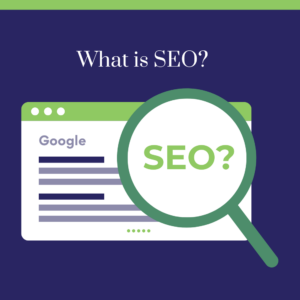
SEO stands for Search Engine Optimization.
But what that really means is tweaking your website so it shows up at the top of search results on sites like Google when people look things up online.
For example, when someone searches for “coffee shops in LA” on Google, SEO helps get your amazing local coffee shop to appear on that first page!
The higher your website ranks in search engines like Google, the more visibility, website traffic, and new customers you can get.
Best part is SEO helps your business reach your target customers without spending a dime on ads. We call this free or organic traffic.
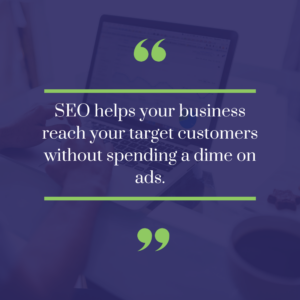
Here are some of the top benefits of investing in SEO:
1. Your website gets way more discoverable.
Top search rankings help people find your business when they search for your products or services online.
Think about this: The #1 result in Google receives a 39.8% click-through rate (CTR). That’s a massive traffic share compared to the #2 result (18.7%) and #3 result (10.2%).
So, if your site isn’t on that first page, you’re missing out on tons of potential customers!
2. It costs you next to nothing after the initial setup.
Unlike paid ads that disappear as soon as you stop paying, SEO keeps working month after month with minimal ongoing costs.
The only real investment is initial legwork optimizing your website and producing SEO-friendly content. But those are one-time fixed costs and smart long-term plays.
After that, you can sit back and watch organic visitors and leads grow every single month—with your wallet intact. No monthly ad bills eating into your budget.
3. Your traffic and sales keep growing over time.
SEO is like compound interest for your website. The more authority your site builds up, the more search engines reward you with higher rankings and more visitors.
Many of my clients see organic traffic double or triple over 6-12 months with consistent SEO!
For established businesses looking for sustainable growth, SEO is a smart long-term play.
Next, let’s look at the perks of paid ads.
What are Paid Search Ads?
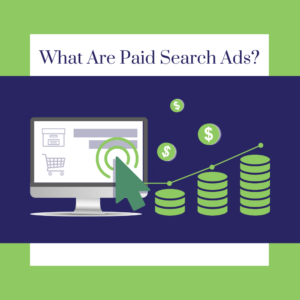
Paid search ads primarily refer to text-based advertising through Google Ads and Microsoft Ads.
Here’s a quick paid ads explainer:
- You bid on specific keywords related to your business. For example, a clothing brand bids on “hoodies for men.”
- When someone searches for your keyword on Google, your ad can show up at the top of the results page.
- You pay a small fee every time someone clicks your ad.
- So if your “hoodies for men” ad gets 100 clicks at $1 each, you spend $100 for those clicks.
Here are some of the best things about paid ads:
1. They get your website visibility immediately.
SEO, which takes a few months to show results for your business (remember, it’s a long-term strategy), and paid ads start driving site traffic from day one (as soon as your campaigns are up and running).
So, if you need customers fast and have the budget, paid search is a great short-term option.
Because paid ads deliver results much more quickly than SEO, they are a smart short-term traffic solution whenever your business needs visibility immediately.
The instant traffic injection can help establish brand awareness, generate sales, and meet urgent goals in the near term before you’ve built an organic search presence.
2. You can target your perfect audience.
Google Ads allows you to target your ads super precisely—by location, age, interests, and more. So you can get your business in front of exactly who you want to reach.
Really drill down to get your ad in front of those most likely to become paying customers. Exclude groups who don’t fit your ideal audience profile to avoid unnecessary spending.
For example, let’s say you run a boutique yoga studio in Austin. With Google Ads, you can display your ads only to women ages 25-40 who live in Austin and are interested in yoga, fitness, and meditation.
This way, every single click and ad impression comes from someone who matches your target customer persona perfectly. Rather than wasting budget on irrelevant audiences, your ads laser-focus on likely hot leads.
3. You’re in control of how much you spend.
With paid ads, you set a monthly budget cap so you never spend more than you’re comfortable with.
And you can adjust or pause your campaigns at any time based on performance.
For example, a boutique e-commerce shop can increase budgets temporarily during holiday seasons to capitalize on higher purchase intent. Or an event venue can pause ads during low ticket sales periods to save costs.
For businesses launching a new website or products, paid ads are fantastic for getting found fast.
Now, let’s compare SEO and Google Ads side-by-side.
It’s Time to Build Your Custom Marketing Strategy!

Now, you’ve got some powerful tactics you can use whether you choose to focus on SEO or paid ads.
Most companies see the biggest success when SEO does the heavy lifting long-term, supplemented with paid ads as needed.
But determining the ideal mix takes testing and optimization over time. Track results across both organic and paid channels. Double down on what moves the needle while pruning inefficient efforts.
If you ever get stuck with your SEO efforts, book a strategy session with me to discuss your goals and get a personalized recommendation.

